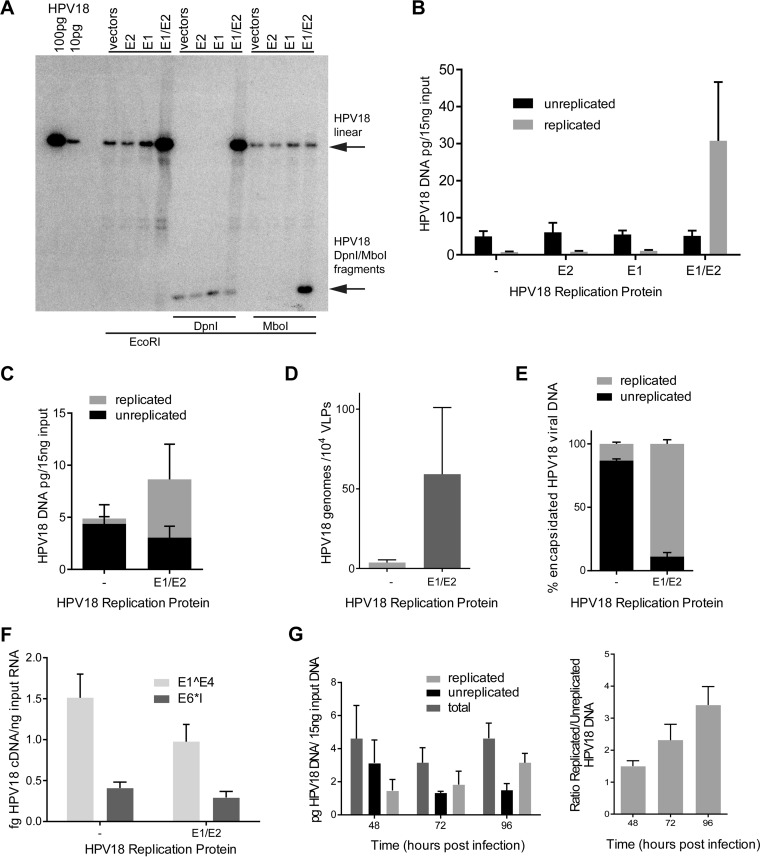FIG 3.
HPV18 replicates in 293TT cells only when E1 and E2 are coexpressed, enabling a DpnI resistance replication assay in quasivirus-infected keratinocytes. (A and B) Recircularized HPV18 genomes were cotransfected into 293TT cells along with pMEP E1 and E2 expression plasmids. Replicated DNA is resistant to DpnI and sensitive to MboI cleavage. 293TT cells replicate the HPV18 genome only in the presence of exogenously expressed E1 and E2 proteins, as shown by Southern blot analysis (n = 2) (A) and qPCR (n = 3) (B). (C) E1 and E2 expression enhances HPV18 replication in cells cotransfected with the pSHELL plasmid and actively packaging viral genome (n = 3). (D) HPV18 genome-containing capsids are enriched in replicated viral DNA when produced from E1/E2-expressing cells (n = 3). (E) The packaging efficiency of HPV18 genomes is greatly increased when produced from E1/E2-expressing cells (n = 3). (F) Quasiviruses containing replicated and unreplicated genomes have similar transcriptional activities upon HFK infection (n = 3). (G) Quasiviruses containing unreplicated viral genomes allow analysis of nascently produced viral DNA after infection of primary HFKs. Total and replicated (DpnI-resistant) DNA was detected by qPCR and normalized to β-actin (n = 3). (A to E) Forty-eight hours posttransfection. (F and G) Seventy-two hours postinfection. Error bars show standard errors of the means. A paired t test was used for statistical analysis.

